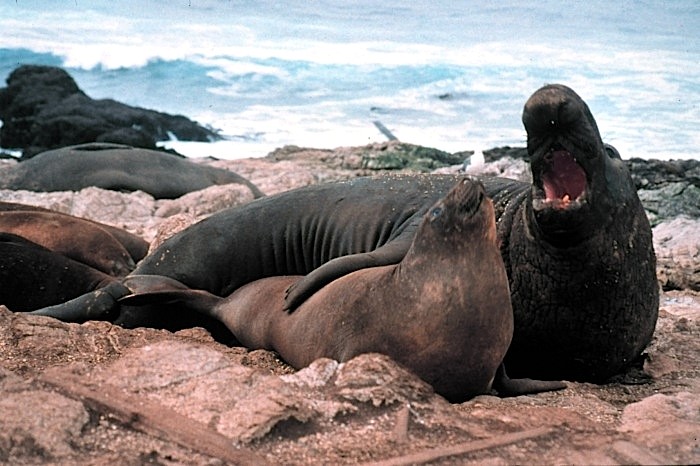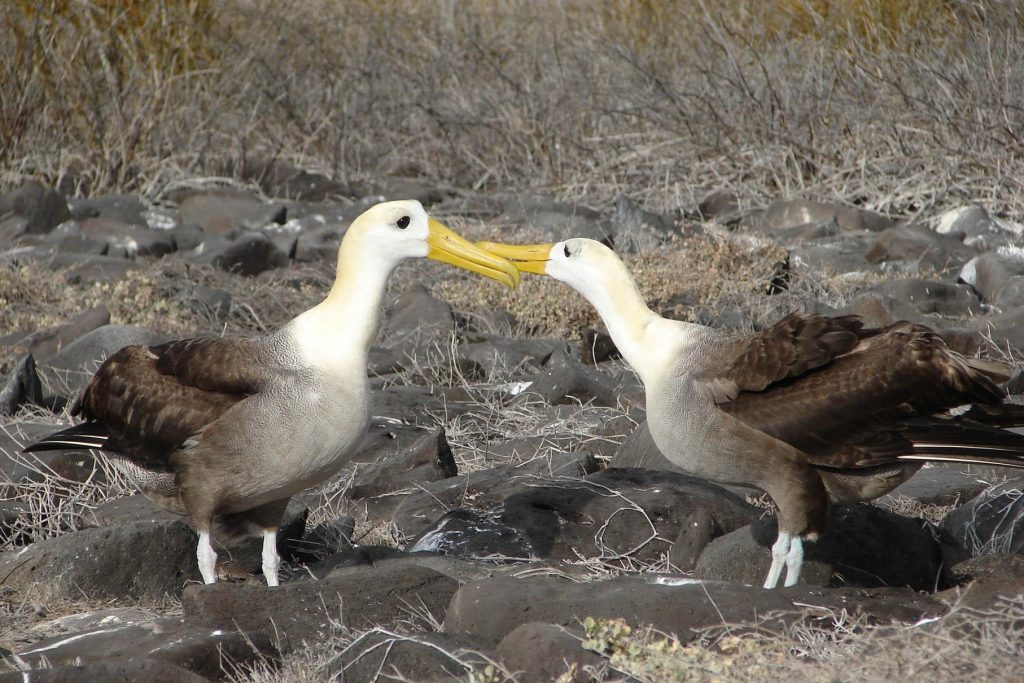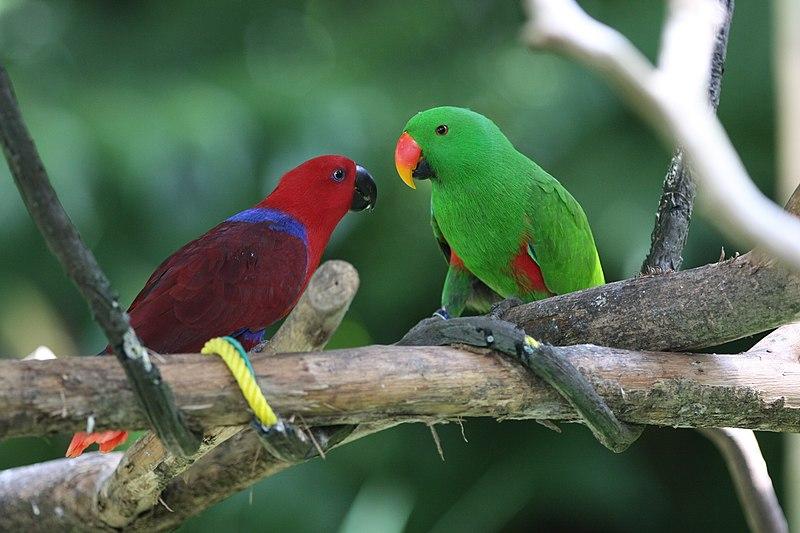8.3 What Distinguishes the Sexes?
In biology we must have a definition for sex that works for all organisms, from worms to whales [1]. These criteria must apply broadly and not have exceptions. Before reading further, review the list of criteria for female and male that you developed as you looked at the species in Section 8.2.
Is it body size?
Many organisms have a size difference between the male and female. The average male gorilla is about twice the size of the average female. Male northern elephant seals are three times the size of females.


For albatrosses there is no size difference between males and females.

Is it color?
We often think of males being more colorful than females. This often has connections to topics we will discuss later about sexual selection and mating systems. But what about these Eclectus Parrots where the female is bright red and the male is green?

Is it behavior?
When considering what is typical male or female behavior you may consider things like aggression, courting a partner, caring for offspring.
For each of the above you could find a species where the behavior is opposite of what you may expect. For example, phalaropes are a shorebird. Phalarope females will fight rival females for access to male mates. Interestingly, phalarope females are also more colorful than the males.
In the video above, there are two phalarope females fighting over one male. You may wonder why this might be the case. Keep this in mind in the future when we read about Sexual Selection (Chapter 9) and Mating Systems (Chapter 10).
Is it the penis?
Your initial thought for what distinguishes male from female may be the presence or absence of a penis. And the presence of a penis would certainly help you distinguish between a male and female wolf, killer whale, or guinea pig. Yet, in the examples on the previous page, only the male snake and the male butterfly (fritillary) have a penis. Seahorse males do not have pensises and neither do most male birds, holly trees, and goldfish. Spiders have appendages (pedipalps) on their heads they use to store sperm and copulate with females, but they aren’t penises.Perhaps most surprising are female spotted hyenas that have a structure that resembles a penis, but is actually an enlarged clitoris.

Is it pregnancy?
You can probably think of some animals that do not experience pregnancy. Animals like frogs and fish release their eggs and sperm into the environment and have external fertilization. There are also animals like birds and reptiles that lay eggs.
You might assume that if a species has internal fertilization and pregnancy that it is the female that carries the offspring. In fact, male pipefish, sea dragons, and seahorses are the sex that carries the offspring and therefore experience pregnancy! In the video below, watch a male seahorse give birth.
Is it the chromosomes?
You may have thought to look for chromosomes (long stretches of DNA) that can distinguish male from female. In a species in which males and females look similar, and in which males lack a penis, chromosomes may be helpful. However, in many organisms, the sex of an individual is not caused entirely by genes on specific chromosomes. The sex of turtles and crocodiles is determined by their egg’s incubation temperature. Some species, like clownfish, can even change from one sex at birth to a different one later in life. You’ll learn more about sex determination in Section 8.5.

23,000+ sexes
 This fungus, Schizophyllum commune, has 23,328 distinct sexes. In species with more than two sexes, we refer to the sexes as “mating types” rather than as male or female. Individual S. commune of any mating type are able to mate with most other mating types, and two fungi mate by fusing certain cells together and exchanging nuclei. Read more about how hundreds of alleles at two loci determine the mating type of each S. commune fungus.
This fungus, Schizophyllum commune, has 23,328 distinct sexes. In species with more than two sexes, we refer to the sexes as “mating types” rather than as male or female. Individual S. commune of any mating type are able to mate with most other mating types, and two fungi mate by fusing certain cells together and exchanging nuclei. Read more about how hundreds of alleles at two loci determine the mating type of each S. commune fungus.
- 1. Roughgarden, J. (2013) Evolution’s Rainbow: Diversity, Gender, and Sexuality in Nature and People. University of California Press, Berkeley. p. 23. ↵
- Image from the NOAA ↵
- Image "amplexus, at Diospyros blancoi branch. Darmaga" by W.A. Djatmiko. Shared with CC-BY-SA 3.0 license. ↵
- Image "Waved Albatross Courtship" by Haplochromis. Shared with CC-BY-SA 3.0 license. ↵
- Image "Eclectus Parrot (Eclectus roratus) -pair" by Shiny Things. CC-0 license. ↵
- Image from David Bygott. Shared with CC BY-NC-SA 2.0 license. ↵
- Image from pxhere in the public domain. ↵
- Image from Alexey Sergeev shared with CC-BY-SA 3.0 license. ↵

